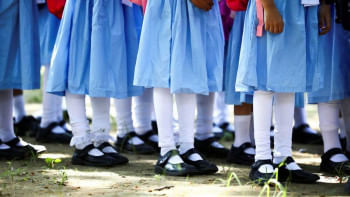Why is child marriage still so rampant?

While the increasing number of child marriages taking place across the country – particularly as a fallout of the Covid-19 pandemic – has been in discussion for the past few years, hardly any reliable study has been conducted to find out the actual causes behind the trend. Against this backdrop, a Brac survey conducted recently has provided us with a somewhat holistic – and horrifying – picture of the situation on the ground. According to the survey, 45 percent of the girls in the country are currently being married off before the age of 18, and more are at risk of being married off.
While poverty, absence of educational opportunities and a lack of social security were identified as the major reasons behind child marriage all these years, the study also found another factor – parents apparently marry off their daughters early when they think they have found "suitable grooms" for them. Yet another surprising finding is that parents from both poor and well-off backgrounds are marrying off their daughters early, which means that regardless of social status, nearly half of the parents still consider a girl child a burden. Another popular perception among parents that often leads to child marriage is that the demand for dowry is less for young brides. As shocking as this may seem, it is an unfortunate reality that men still prefer marrying teenage girls because they can be easily controlled.
How is it that, despite decades of work by various stakeholders and the government's so-called commitment to stop child marriage, we are still so far from reaching our goals? It is evident that the law to check this social menace is not being enforced, and it's high time the government started taking stern action against administrators who are failing to implement the laws. Women rights organisations have long warned about the dangers of keeping the special provision in the Child Marriage Restraint Act, which allows families to misinterpret and misuse the "special circumstance" clause in various situations. It should be obvious by now to the policymakers that there can be no alternative to repealing it. Furthermore, ad hoc measures to address child marriage will not work unless the underlying patriarchal mindsets of communities can be changed, for which we need sustained sensitisation programmes across the country. Unless the government takes strong actions now, our national target of ending child marriage by 2041 will never be met.


 For all latest news, follow The Daily Star's Google News channel.
For all latest news, follow The Daily Star's Google News channel. 








Comments